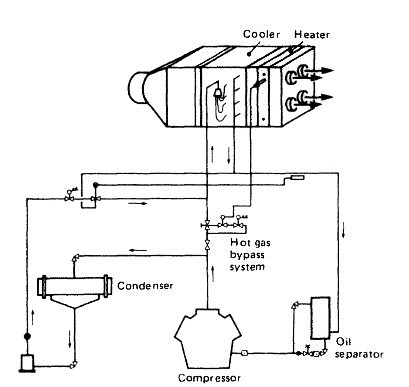
Single-duct & Twin-duct Marine Air Conditioning System
Ships travel the world and are therefore subject to various climatic
conditions. The crew of the ship must be provided with reasonable
conditions in which to work regardless of the weather. Temperature
alone is not a sufficient measure of conditions acceptable to the human
body. Relative humidity in conjunction with temperature more truly
determines the environment for human comfort.


